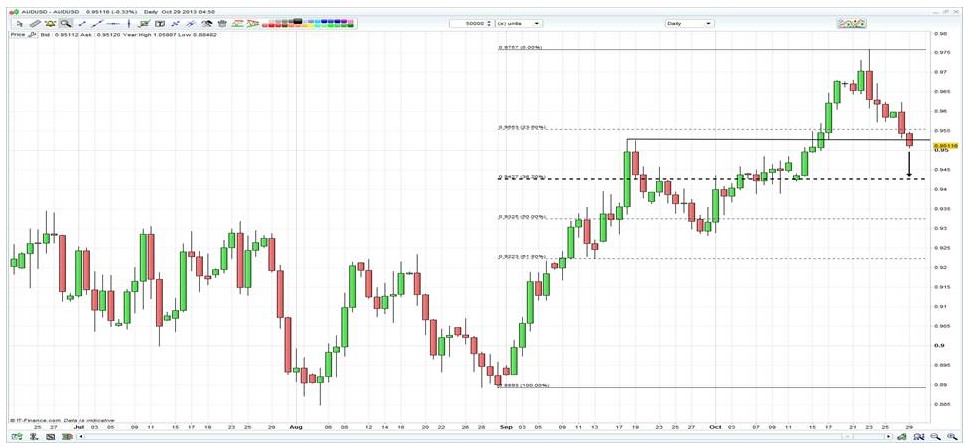
US futures have not slipped too much, despite a poor tape in Japan, Australia and some USD strength. The Apple result will be in focus during the cash session and although the stock fell initially in post-market trade, it subsequently recovered and is giving no clear directional bias for today’s trade.
The tech giant has had a solid rally of late; however is it enough to sell off on a modest miss on Q1 gross margins? Otherwise, this was a solid result. Pfizer takes over as the market’s big earnings report today, but as things stand it will be Apple that will divides the traders.
Asian markets lower, but finding buyers into the afternoon
Asia has been generally offered, with Japan the underperformer down 0.7%, although this market has found buyers throughout the afternoon, although price action seems to be dictated to by the Chinese market. The USD has been reasonably well bid, with AUD/USD, GBP/USD and EUR/USD finding sellers. Whether it’s time to call an end to the USD rout is uncertain at this stage, but there is clearly indecision being seen on the US dollar index, which suggests the bears aren’t getting things all their own way.
EUR/USD is a buy on a daily close above 1.3833 (the 61.8% of the 2011 to 2012 sell-off), although the rejection of this retracement level on Friday and subsequent ‘doji’ print has suggested a reversal could be on the cards. Perhaps this is just some EUR longs tidying up positioning ahead of the FOMC meeting, but price action from here should be watched, especially after yesterday’s terrible US pending home sales (-5.6%) and average industrial production report, which was buoyed purely on one sector (the utility sector). Given the weak data, you could have seen EUR/USD rally, but downside pressure is being witnessed and thus I am keen to watch price action in the short term for confirmation a reversal is due.
AUD/USD fell to a low of 0.9505, thanks solely to RBA governor Glenn Stevens detailing in early trade that it is likely the AUD will be ‘materially lower’ sometime in the future, given declining terms of trade. Mr Stevens mentioned the Fed tapering will aid the pairs decline (if it ever materialises), which is fitting with most strategists in the market who are calling for lower levels in the pair over time. The positive thing for the USD is that the chance of a government shutdown in January seems to be low (although it can’t ever be ruled out), given Senate Republican leader Mitch McConnell has already expressed that it is not going to use a shut down as a way of changing the affordable-care act. We are even seeing signs that the Chairs of the House and Senate budget committee are actually in dialogue to try and find agreement. The potential for agreement could anchor expectations for a March taper by the Fed, although obviously it’s completely data dependant.
(Daily chart showing the breakdown of AUD/USD- looks like it wants to go lower)
A multi-year bull market on the cards in the USD?
I still stand by my call that when the Fed does taper, it will be the start of a long-term bull market in the USD. The trajectory of the deficit is the key here, although this firmly highlights the increasing role that the Chinese Yuan will play in business further down the line.
It’s also interesting to hear the RBA governor warn about the housing market for the first time in years, although he put the emphasis back on lenders to maintain lending standards. We’ve also seen China repo rates fall, albeit very modestly. The PBOC was back conducting its usual market operations with its first reverse repo in two weeks. Still for me, the PBOC has signalled its intent that it is gradually going to reduce the liquidity in the markets and should take action in Q4 against property prices that simply can’t continue their current trajectory.
ANZ out with solid results
On the equity front, ANZ bank has been the big talking point in Australia, and the bank produced a solid result, with a fifth consecutive record profit. The strong dividend stood out, while there was further improvement in asset quality and lending growth. There has also been an element of switching going on in the banking world, with traders selling out of CBA and into ANZ, with volume in ANZ substantial. The fact the material plays have found sellers is why we are seeing the index lower, and we’ve seen the ASX 200 close back below 5426 (the 61.8% retracement of the all-time high to GFC low). The market will look out for numbers from NAB on Thursday now and this could cause further switching (although not out of ANZ), but once again the story of banks using capital management to increase shareholder value continues.
Ahead of the European open
European markets should see another flat open, although there are a number of events that will interest traders. Of course earnings will be in focus; however on the data front we get Spanish retail sales, consumer confidence in Germany and France.
On the other side of the pond the US release its consumer confidence numbers, Case-Shiller house price index and September retail sales report. Markets continue to plod along, and there continues to be no conviction to push prices lower, and perhaps this comes from the Fed’s narrative, where we could see a reaction if it gives a clear indication that tapering in December is on the cards. As mentioned, this is unlikely and March still feels like a more fitting date given the trend in inflation and job creation, however when it comes to central bank communication and market positioning, there are often disconnects and this creates volatility.
